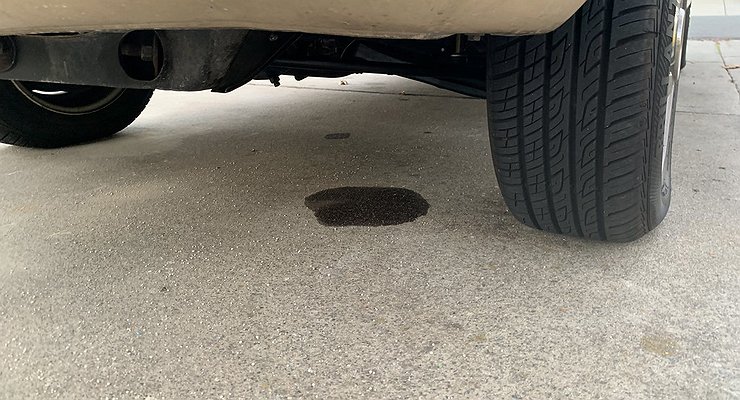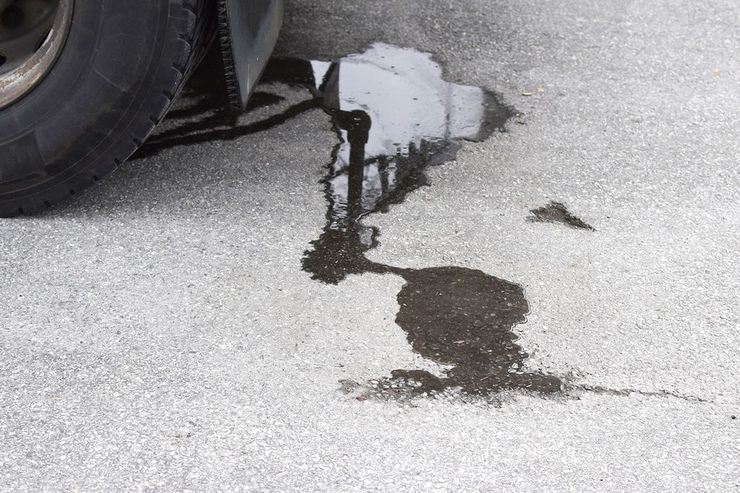From what the car can “cry” in winter
- November 29, 2022
- 0
Severe temperature drops like not only people, but also mechanisms. Including cars. The AvtoVzglyad portal tells how frost squeezes “tears” not only from people’s eyes. In winter, the
Severe temperature drops like not only people, but also mechanisms. Including cars. The AvtoVzglyad portal tells how frost squeezes “tears” not only from people’s eyes. In winter, the

In winter, the car, especially the engine compartment and everything in it, constantly experiences very serious temperature fluctuations. The crackling frost of overnight parking gives way to the unbearable heat of a warm engine. And when they muffle it, the cold comes again. In theory, these types of collisions are taken into account by engineers at the design stage of the vehicle. For this reason, when a car owner discovers a non-freezing puddle under his car, which spent the night in an open parking lot, he clearly has no clear thoughts.
Why can a car “cry” in the cold? To answer this question, we will first determine which substances can drip from the tank. This is engine oil, antifreeze, fuel, transmission fluid or “oil” from the gearbox. The cause of “crying” is always a violation of stuffiness in one place or another. As a rule, various seals and gaskets are the cause for this. The mechanism for such a leak to occur is simple. In frost, as you know, all objects are compressed. The material of these same seals / gaskets is no exception. As well as metal with plastic, which make up all the units and components of the car. During use, sealing materials gradually lose their elasticity.
Having lost the ability to stretch and contract in the right amount, they become the cause of the loss of tightness of a particular system in the cold. When this happens to one of the gaskets in the engine lubrication system, an oil puddle forms under the machine after parking. If we talk about the cooling system, then we see “droplets” of antifreeze. And so on. The insidiousness of the situation also lies in the fact that a leak of this origin manifests itself exclusively on a cooled car.
When heated, all “frosty” gaps in unnecessary places are closed due to the effect of thermal expansion and restoration (with increasing temperature) of the elasticity of the sealing elements. That is, when visiting a gas station, the master may not understand if he examines a warmed-up car – where from and what flows from it. Be aware that hoses and pipes – cooling systems or fuel lines, for example – also have a tendency (especially with age) to “brown” in the cold. And crack at the same time. Granted, if such an event ever happened, identifying the source of the “crying” won’t be a problem. Fluid will drip or even “jump” out of it in any condition of the car – hot or cold. This makes it much easier to diagnose the problem.

In winter, the car, especially the engine compartment and everything in it, constantly experiences very serious temperature fluctuations. The crackling frost of overnight parking gives way to the unbearable heat of a warm engine. And when they muffle it, the cold comes again. In theory, these types of collisions are taken into account by engineers at the design stage of the vehicle. For this reason, when a car owner discovers a non-freezing puddle under his car, which spent the night in an open parking lot, he clearly has no clear thoughts.
Why can a car “cry” in the cold? To answer this question, we will first determine which substances can drip from the tank. This is engine oil, antifreeze, fuel, transmission fluid or “oil” from the gearbox. The cause of “crying” is always a violation of stuffiness in one place or another. As a rule, various seals and gaskets are the cause for this. The mechanism for such a leak to occur is simple. In frost, as you know, all objects are compressed. The material of these same seals / gaskets is no exception. As well as metal with plastic, which make up all the units and components of the car. During use, sealing materials gradually lose their elasticity.
Having lost the ability to stretch and contract in the right amount, they become the cause of the loss of tightness of a particular system in the cold. When this happens to one of the gaskets in the engine lubrication system, an oil puddle forms under the machine after parking. If we talk about the cooling system, then we see “droplets” of antifreeze. And so on. The insidiousness of the situation also lies in the fact that a leak of this origin manifests itself exclusively on a cooled car.
When heated, all “frosty” gaps in unnecessary places are closed due to the effect of thermal expansion and restoration (with increasing temperature) of the elasticity of the sealing elements. That is, when visiting a gas station, the master may not understand if he examines a warmed-up car – where from and what flows from it. Be aware that hoses and pipes – cooling systems or fuel lines, for example – also have a tendency (especially with age) to “brown” in the cold. And crack at the same time. Granted, if such an event ever happened, identifying the source of the “crying” won’t be a problem. Fluid will drip or even “jump” out of it in any condition of the car – hot or cold. This makes it much easier to diagnose the problem.
Source: Avto Vzglyad
Donald Salinas is an experienced automobile journalist and writer for Div Bracket. He brings his readers the latest news and developments from the world of automobiles, offering a unique and knowledgeable perspective on the latest trends and innovations in the automotive industry.